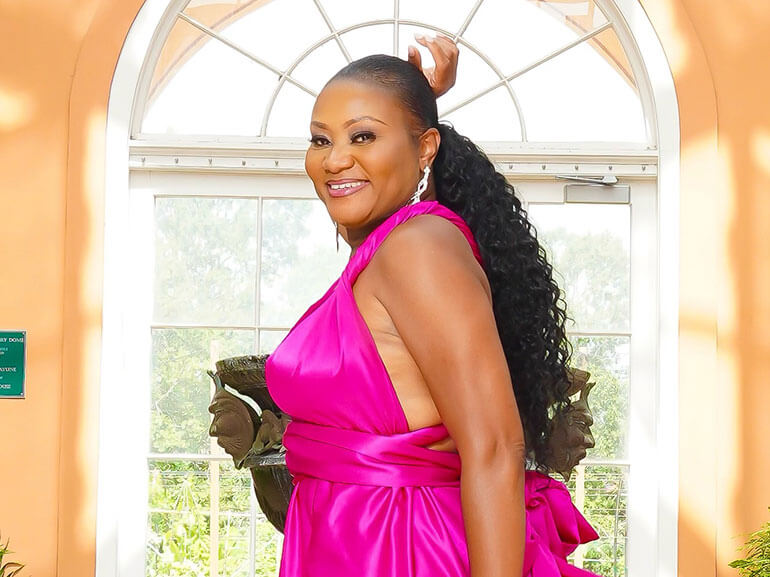Sherrana's Story

When Sherrana McGee-Stemley wasn’t selling Mary Kay cosmetics, she was busy with her husband, kids and grandchildren and socializing with friends.
But that all changed one evening when the 49-year-old awoke with sharp pains in her left arm.
By morning, Sherrana’s arm was numb, had a severe headache, and blurry vision in her left eye. Alarmed by the stroke-like symptoms, Sherrana took an aspirin and headed to the local hospital. Brain scans revealed no hemorrhages or clots, and Sherrana spent almost two weeks in the hospital for further observation and testing before she transferred to Ochsner Rehabilitation Hospital for her recovery.
Upon arrival, Sherrana needed assistance for almost everything—bathing, dressing, bed mobility, toileting and transfers. Her left arm remained weak, and she had little endurance. Ochsner’s care team mapped out a plan to help Sherrana return to her level of function before she was hospitalized including therapeutic activities/exercises, neuromuscular education and training on techniques to assist in daily living activities.
Sherrana’s physical therapy team started mobilizing her with a hemi walker, a device that allowed her to lean on one side of it for support. They also had her walking on a treadmill while wearing a bodyweight support system and incorporated the use of an exoskeleton, a wearable robotic device, into her therapy to improve her walking mechanics and strength of her left leg. Additionally, her physical therapy team used a functional electrical stimulation device to stimulate her muscles during activity. Sherrana’s intense occupational therapy (OT) included therapeutic exercise, learning new techniques for tasks and strengthening her self-care abilities.
Walking in the exoskeleton proved to be a turning point in her recovery, and Sherrana soon progressed to start without the need for the assistive device. She used some basic aides – a cane, orthotic and knee cage – but she could walk 300 feet with a cane independently and tackle stairs without assistance. Her husband was by her side cheering her on during her sessions and motivating her, as was her therapy team.
Sherrana quickly progressed from requiring total assistance to functioning almost independently. After four weeks of inpatient rehabilitation, Sherrana was ready to return home to her family. She is looking forward to returning to work and continuing to strengthen her left side through outpatient therapy sessions.
Sherrana said optimism and a positive attitude propelled her through recovery. She offers this advice to anyone who finds themselves in a similar position: “Keep a positive outlook and listen to and trust your therapy team."